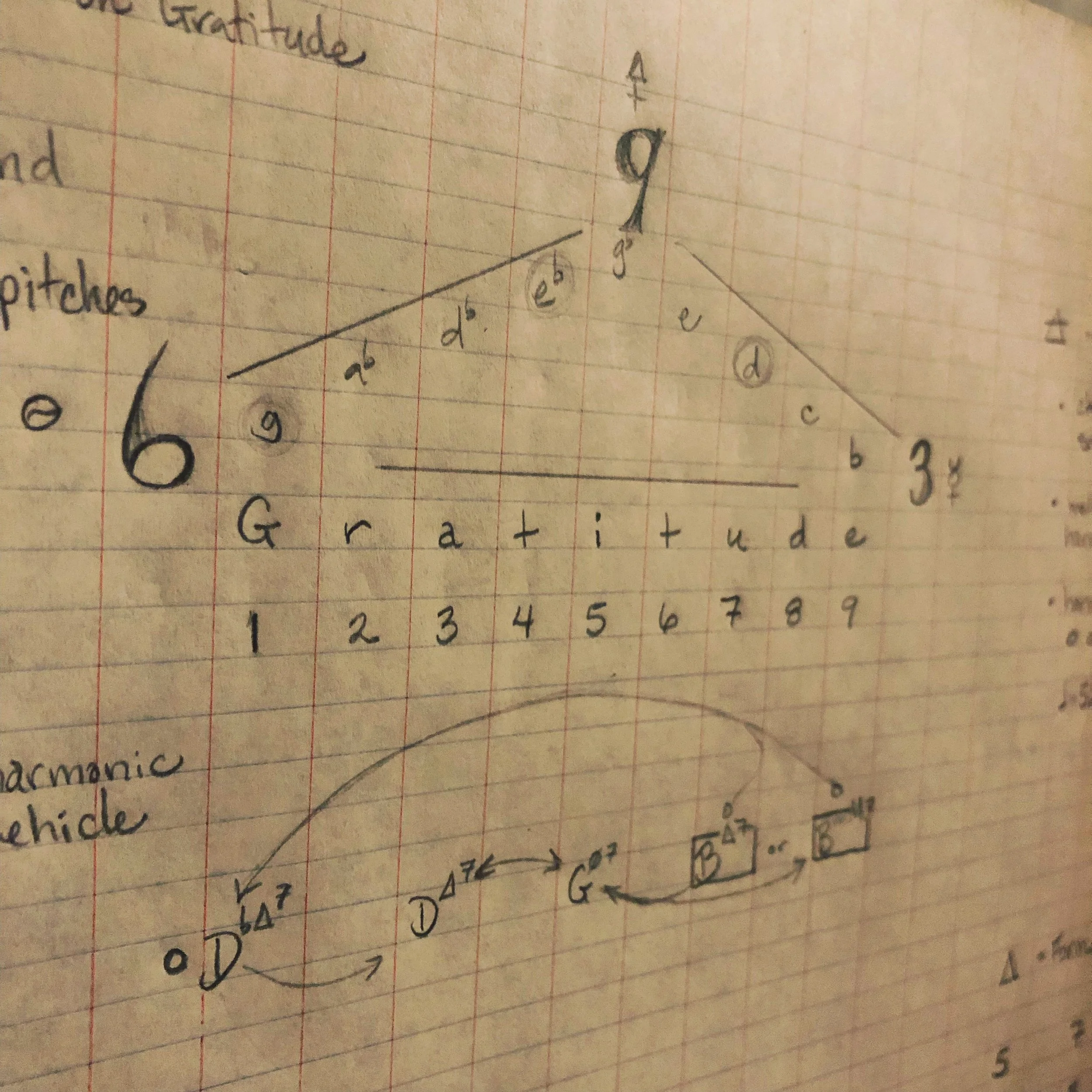5 Things to Consider When Composing a Piece of Music
Composing Music be like…
Begin with the Elements
SPIRIT • SOUND • TIMBRE • RHYTHM • FORM
Choose a
I. SOUND
For now, use only a single sound. It can be complex or simple.
In choosing a sound, consider how hi or low, loud or soft, or combinations of these characteristics. You may also ask yourself, What message might this sound convey? Is it the right sound, or the obvious choice? If the sound you are seeking does not exist, create it. Next, identify the
II. TIMBRE
or tone color/quality of the sound. It is a sound’s unique characteristics distinguishing it from others. The timbre of the human voice is different from violin, or saxophone. If two, different sounds play the the same pitch, their timbre gives them individuality and character. Additionally, two similar sounds at the same pitch can also vary in timbre. i.e. Human voices are similar, but distinguishable as a result of timbre. Tessitura and Texture are timbral traits. What is the tone color or quality of the sound you chose? Explore as many timbral traits as possible.
But, how will the elements be of Sound and Timbre be contained?
III. FORM
Music has to be streamed in real time. Form and Structure helps with framing and assembling the work, but also with the perception. There are many musical forms to explore. Decide which best facilitates the work. You may want to make decisions about number of sections, how those sections may fit together, or how are they contrasting. Examples of musical forms include rondo, canons, Binary (AB) or Ternary (ABA), Theme and Variation, etc. Now, consider the
IV. RHYTHM
This is an illusion created using sound. Regularly repeated patterns against a pulse, Do not forget phrasing. Silence creates balance and leaves room for charm and grace. Throughout the process always check in with your intuition.
Even though it is listed last, the end is really the beginning. The circle is really a spiral. Let’s examine the
V. SPIRIT element. This element is your consciousness and existence. If you have not satisfied the Spirit, consider a different solution. If the solution is not obvious, you are too submersed. Return to the surface, breathe. Try again, go a different way this time. Keep careful notes as this is how you develop your process. When the spirit is silent, listen to awaken it. Listen through your instinct, heart, and thoughts. Be mindful, that listening doesn’t always involve the ear. You may receive vibrations or musical impulses through your skin, as well as visually. A walk in the forest, beach, or city park, does wonders for this element. Many people often seek silence for nourishment. That’s ok, but you may find silence deafening, as they say. Keep it relative and balanced.
G r a t i t u d e I s E s s e n t i a l.
Writing Prompt: Try composing short melodies or musical poems. It helps when designing and planning larger scale works. For an example take a listen to Tanka for Unaccompanied Violoncello
Yo, I’m Kennedy
founder and composer of the Mad Composer Lab. I hope you find the information in this blog post to be meaningful and useful. Feel free to connect via email if you have any questions or would like to sign-up for one-on-one private music composition sessions. If you’re wondering who I am, check out my bio situation. Gratitude.



